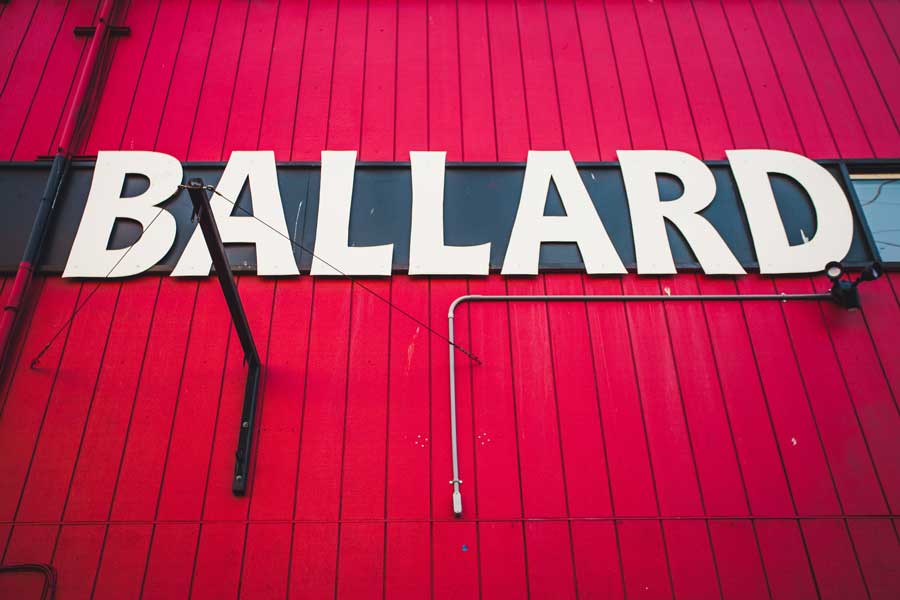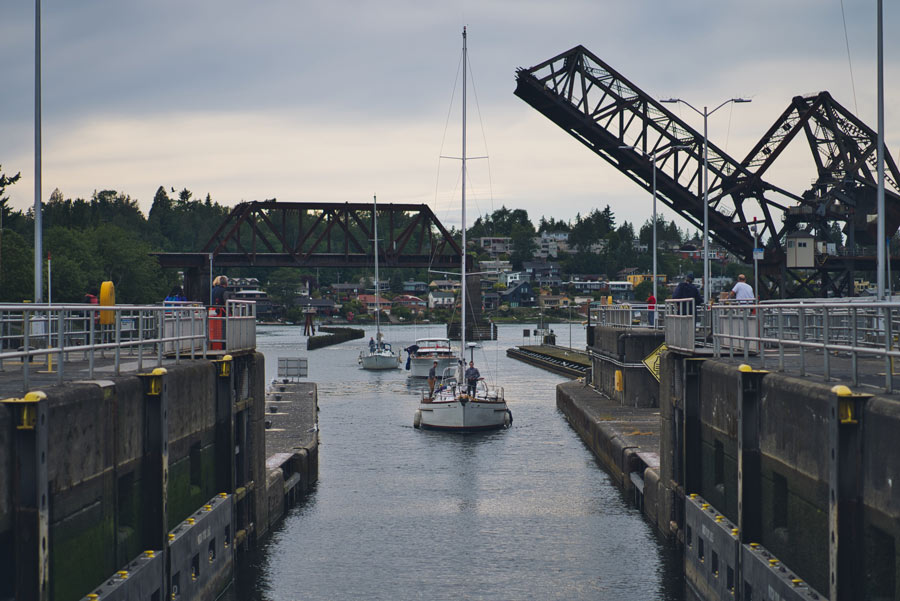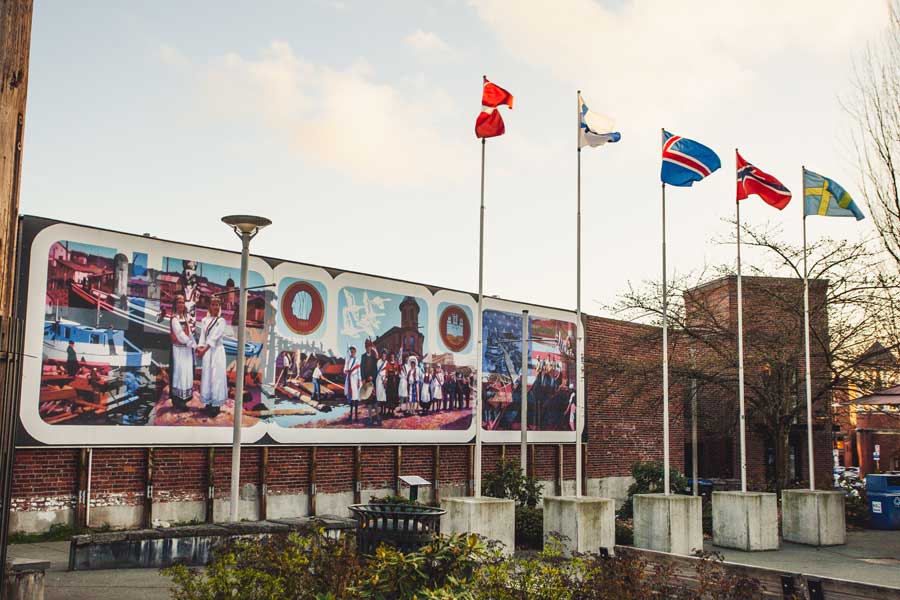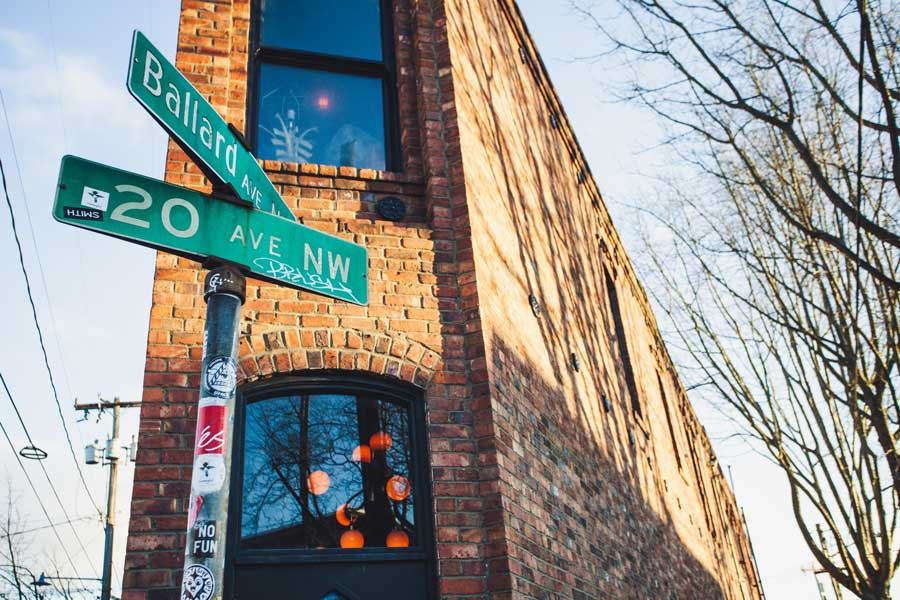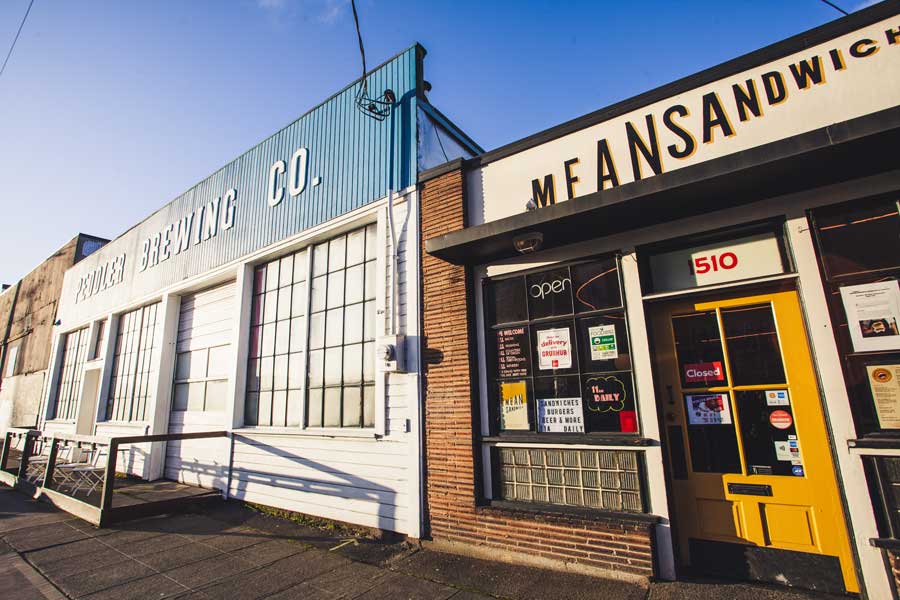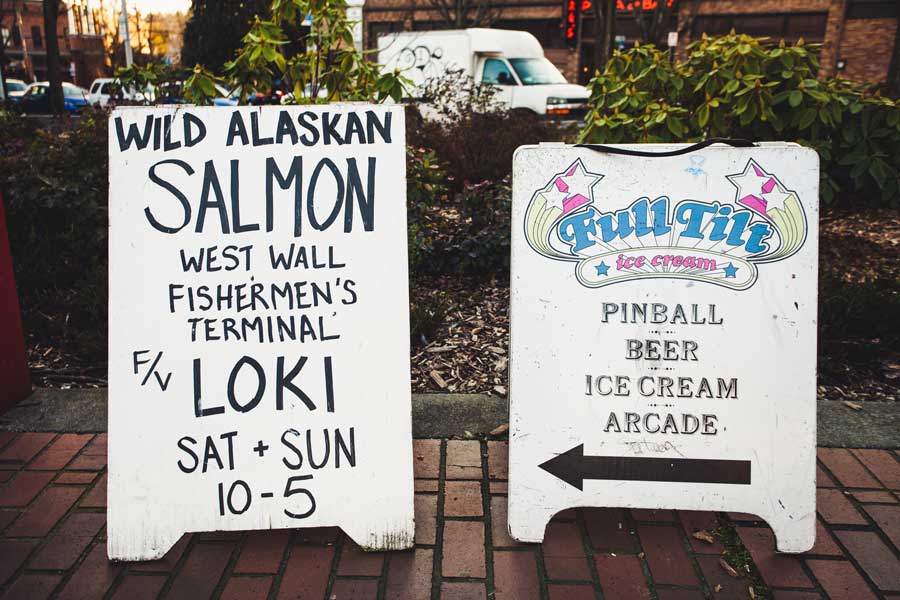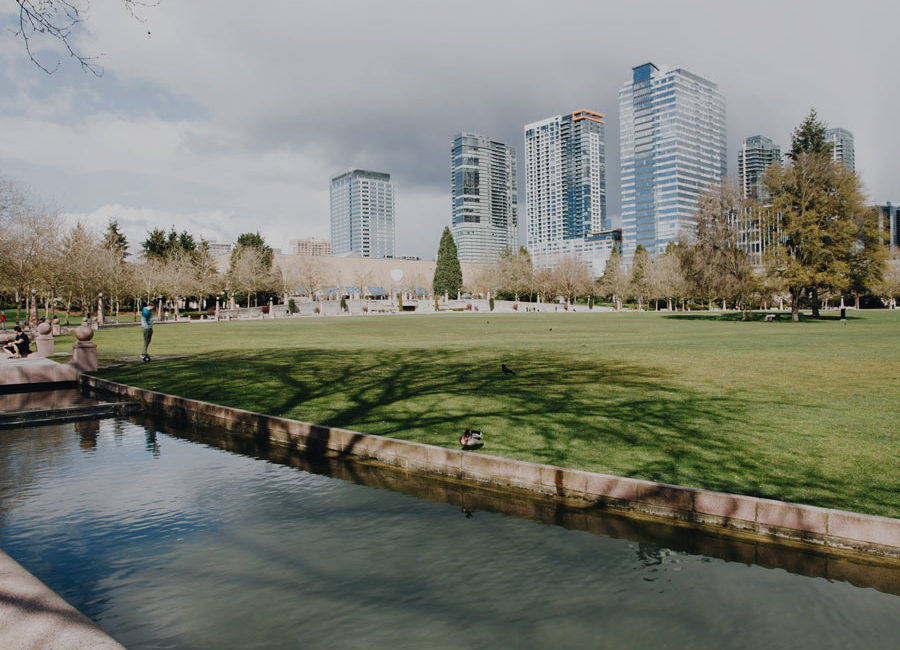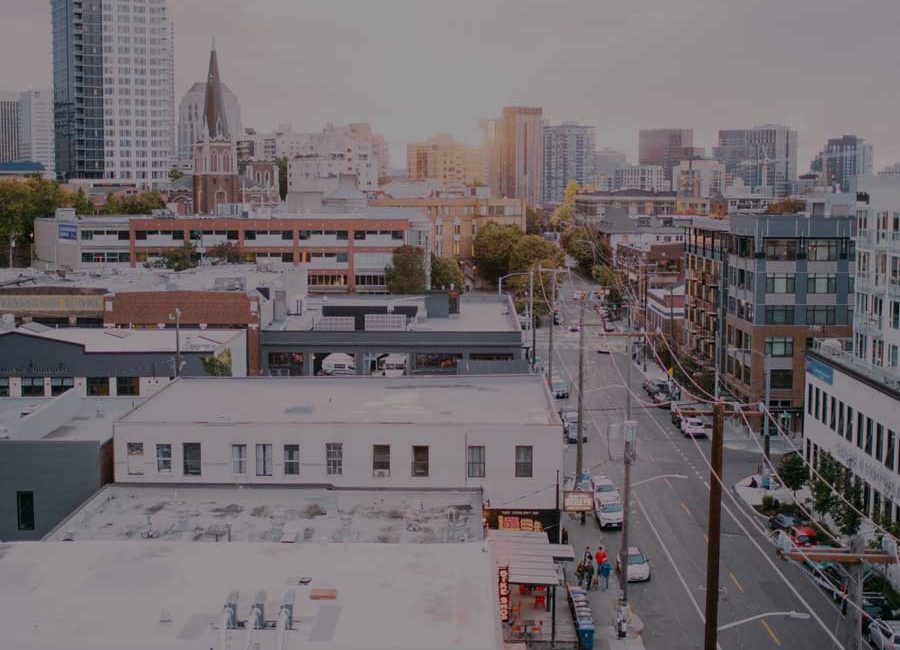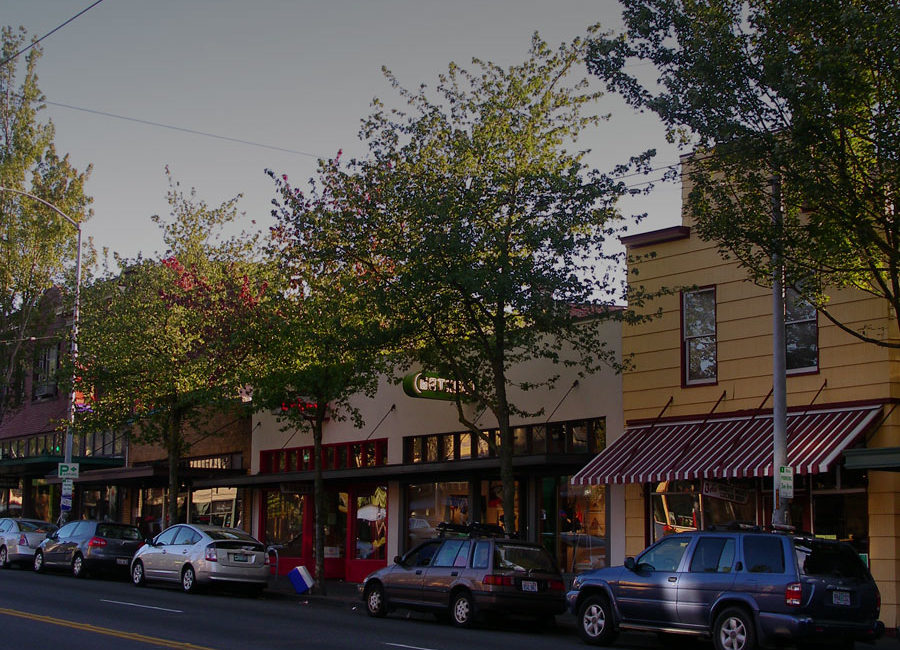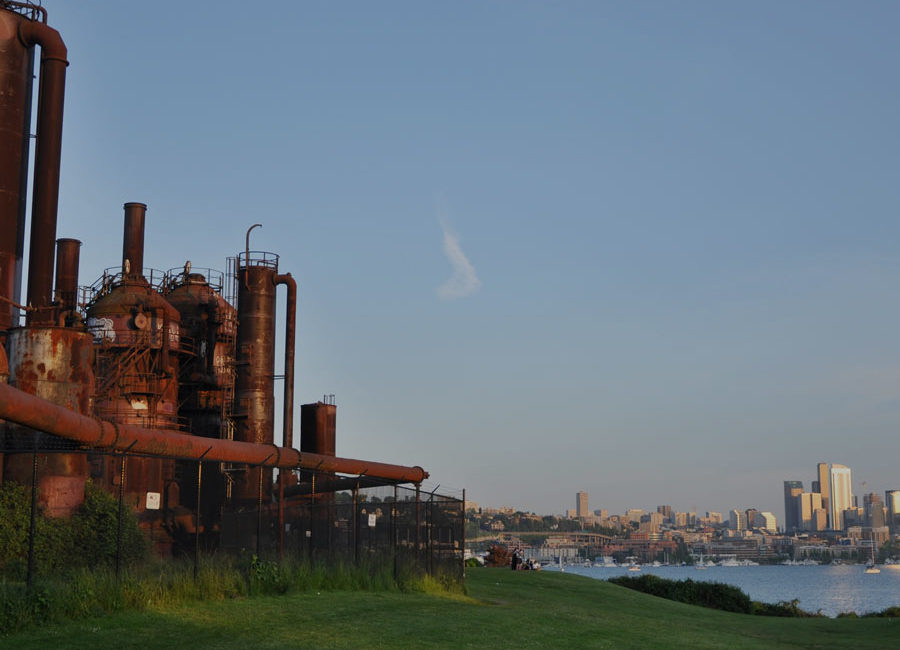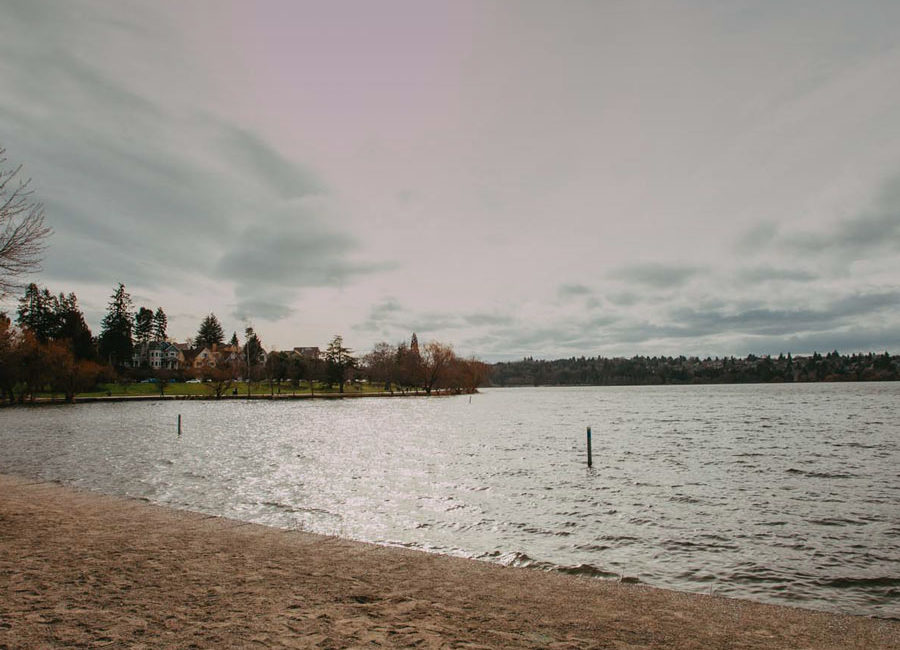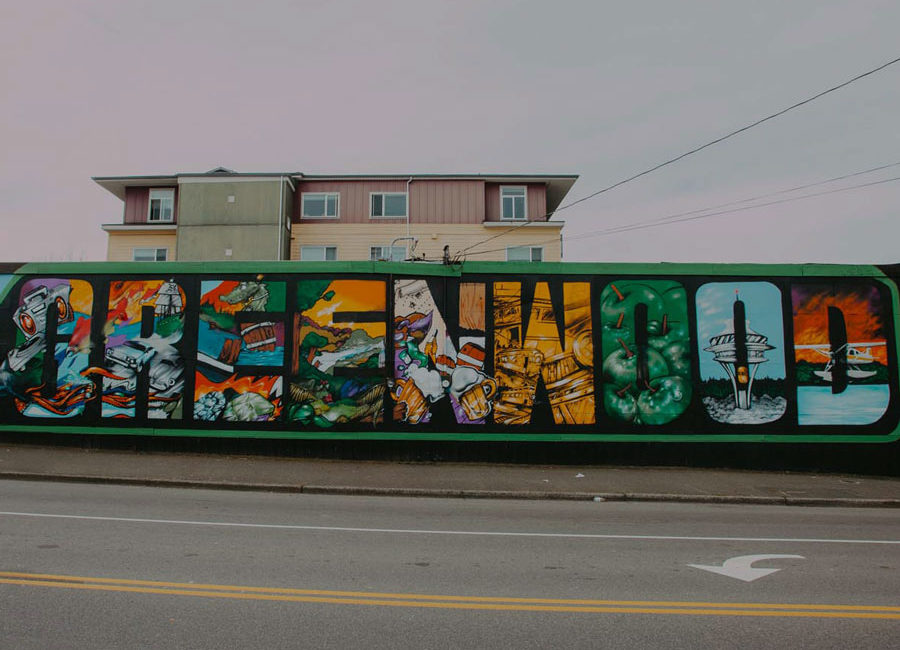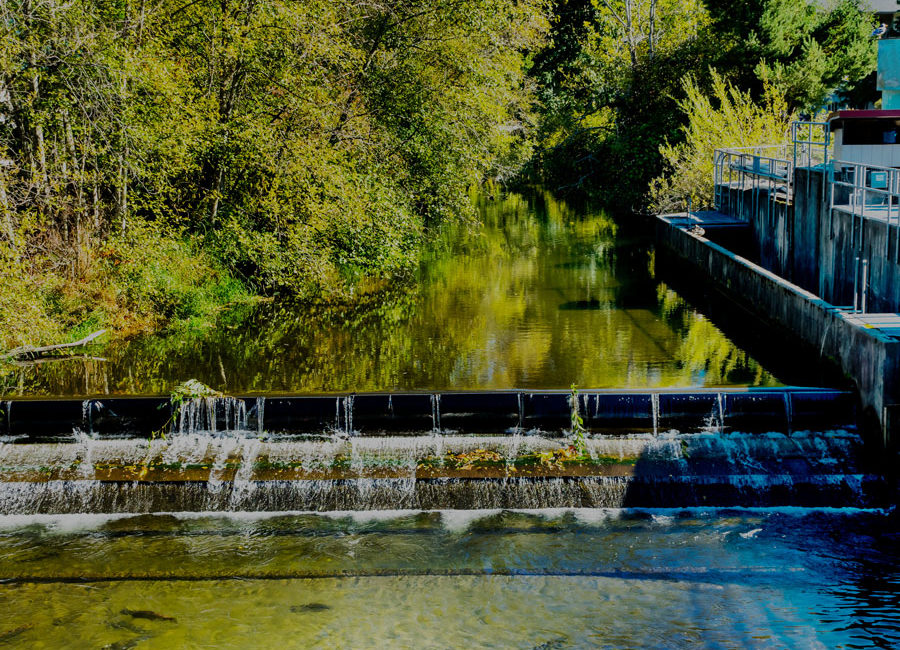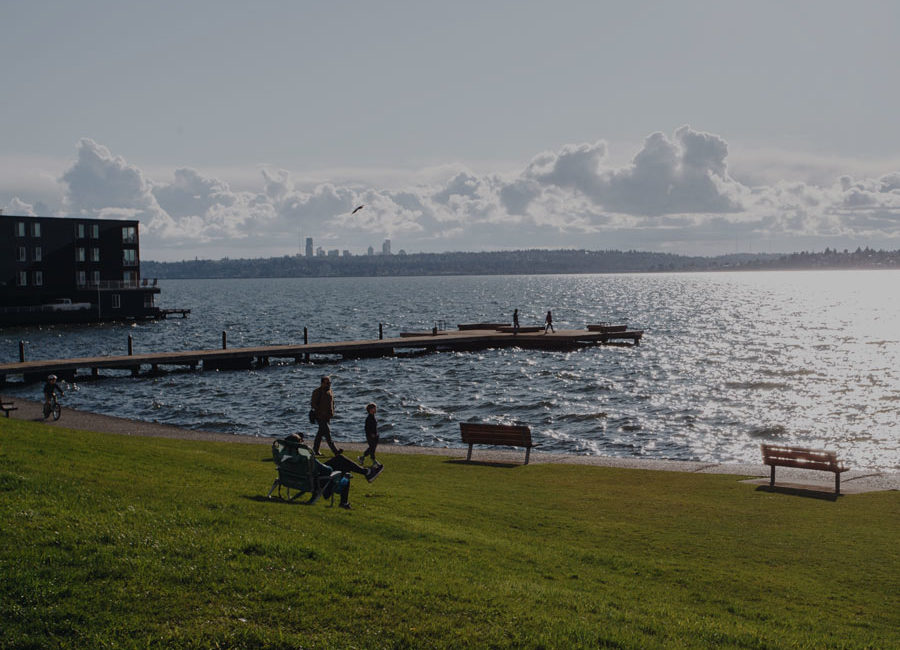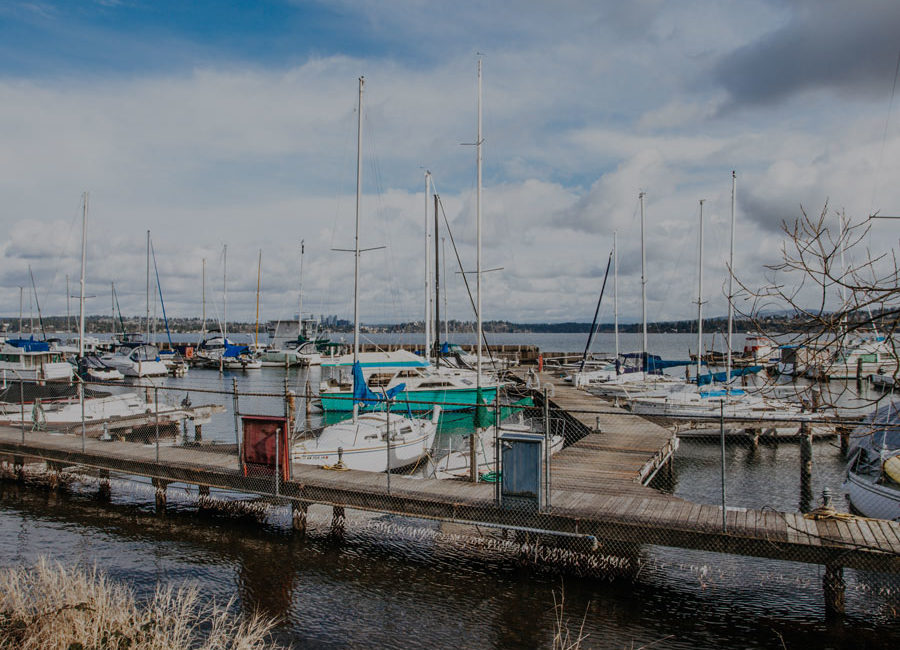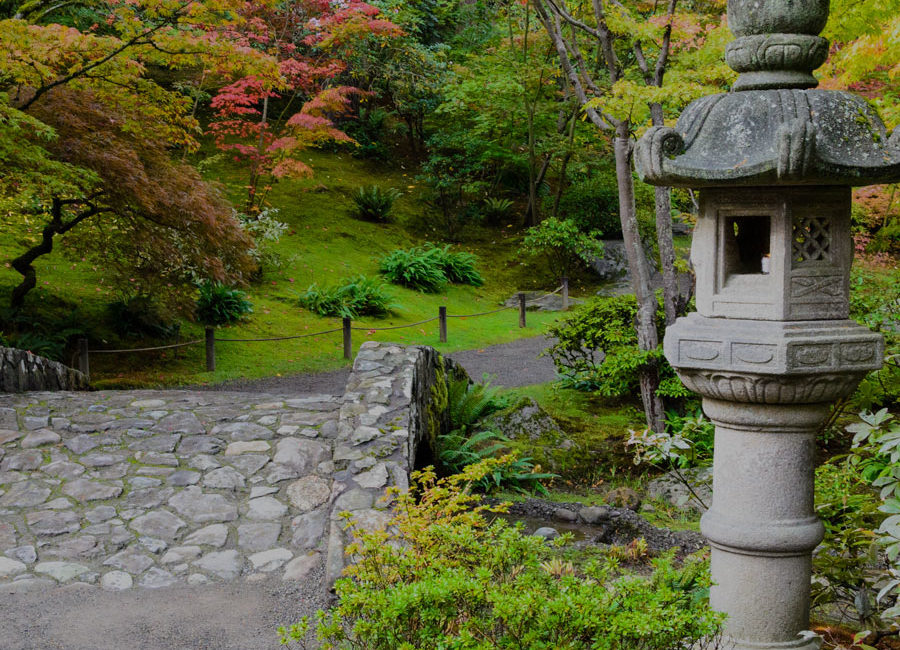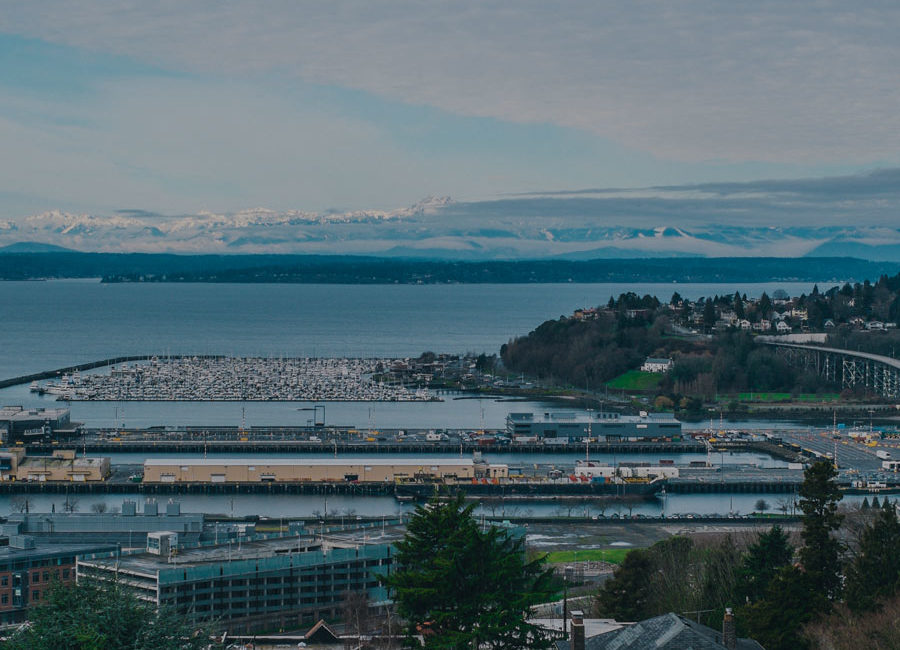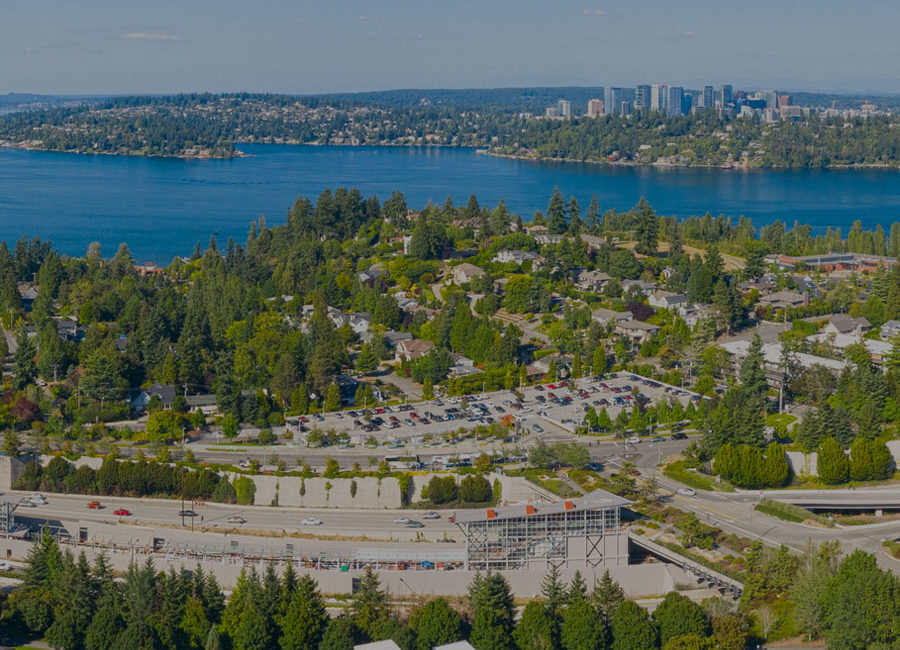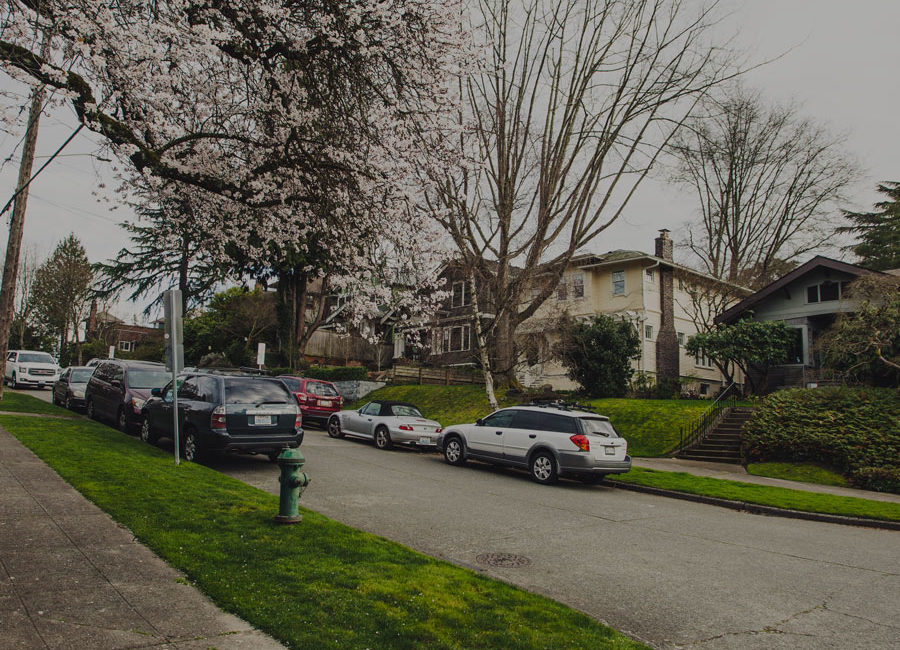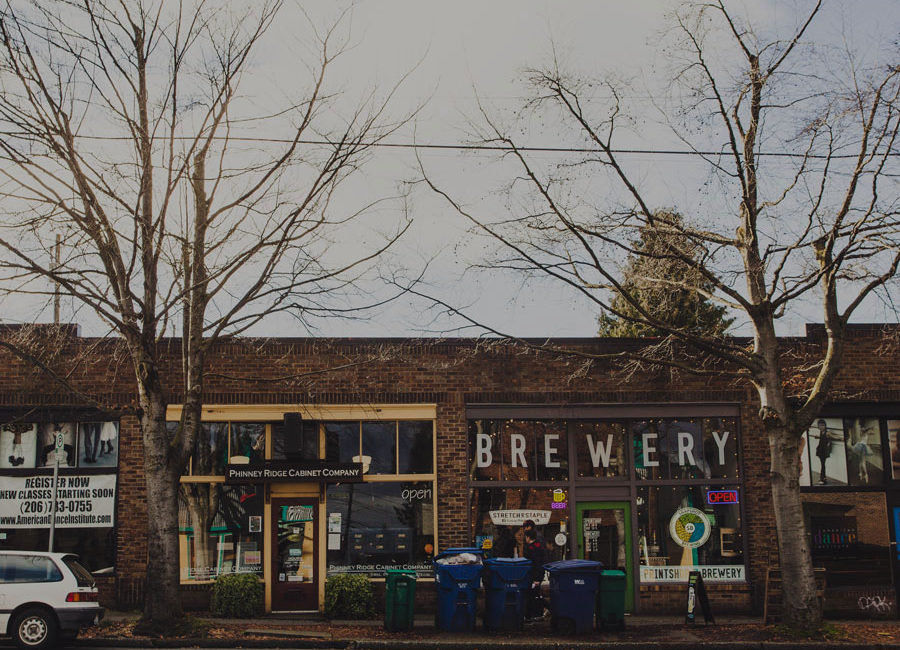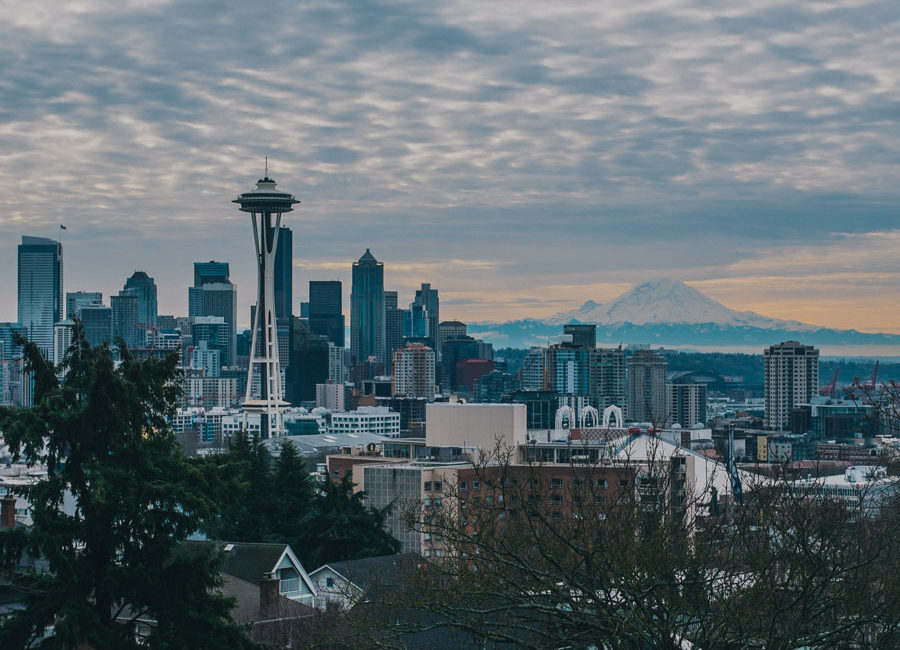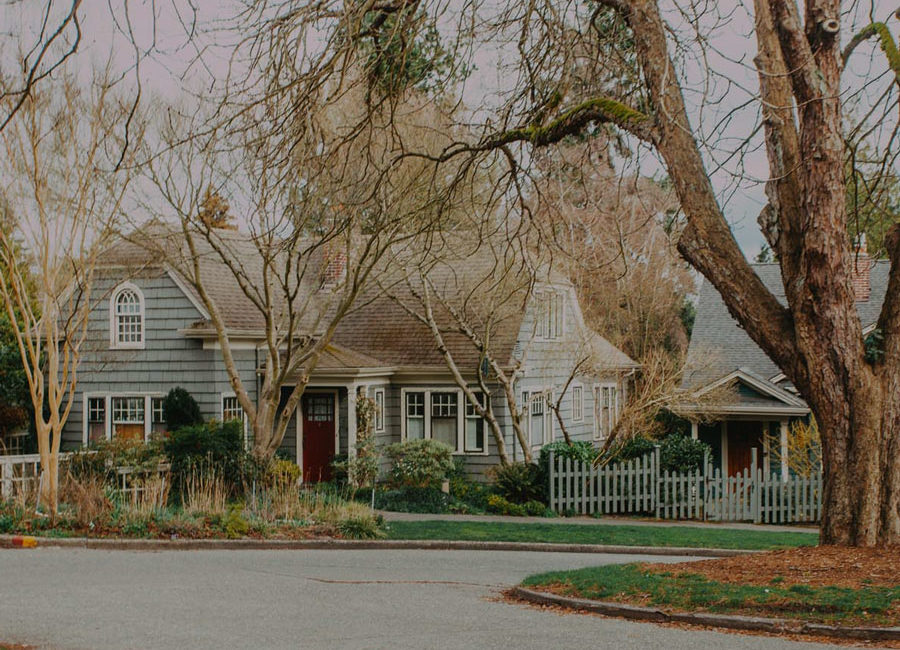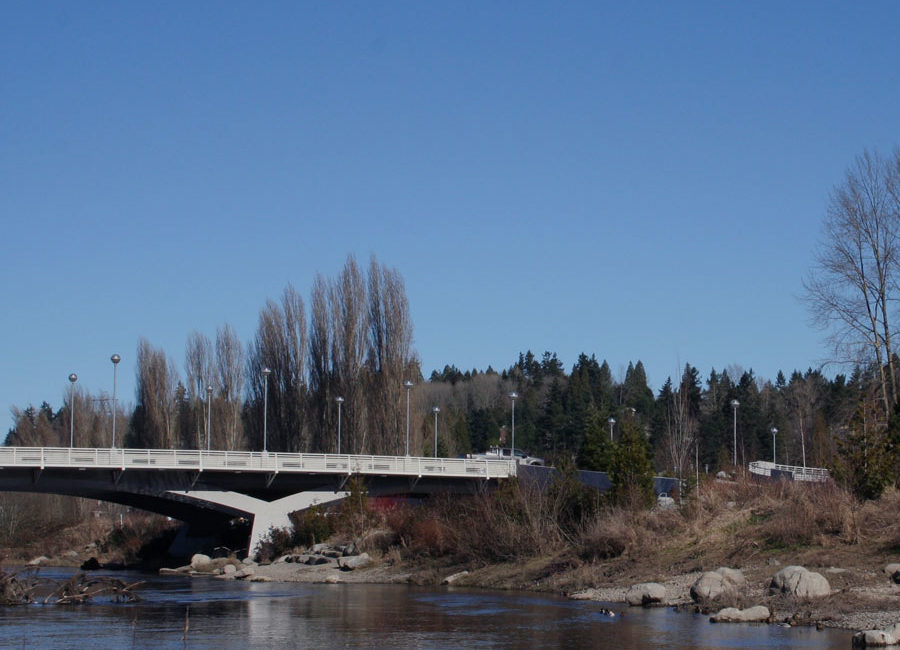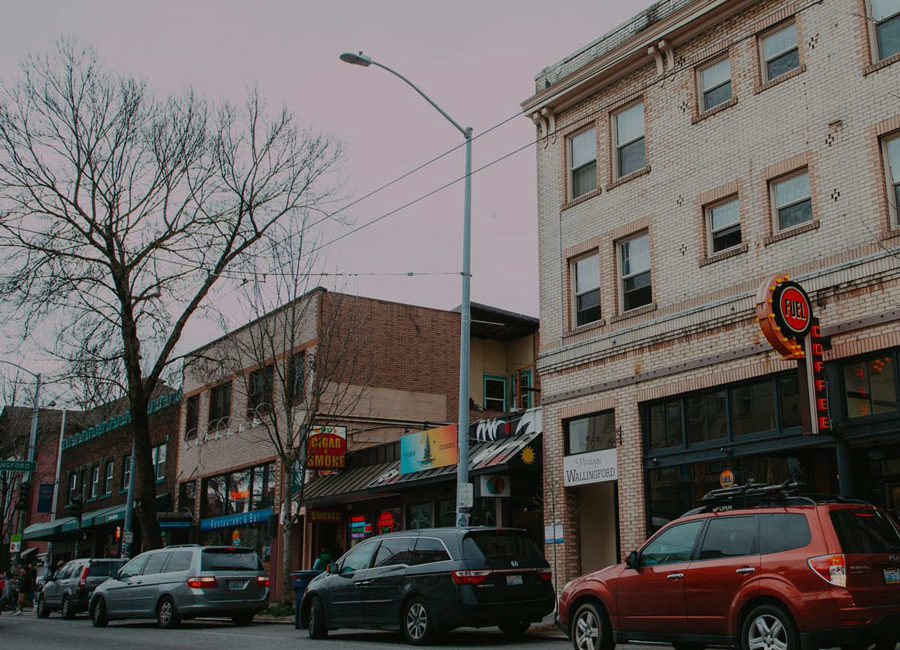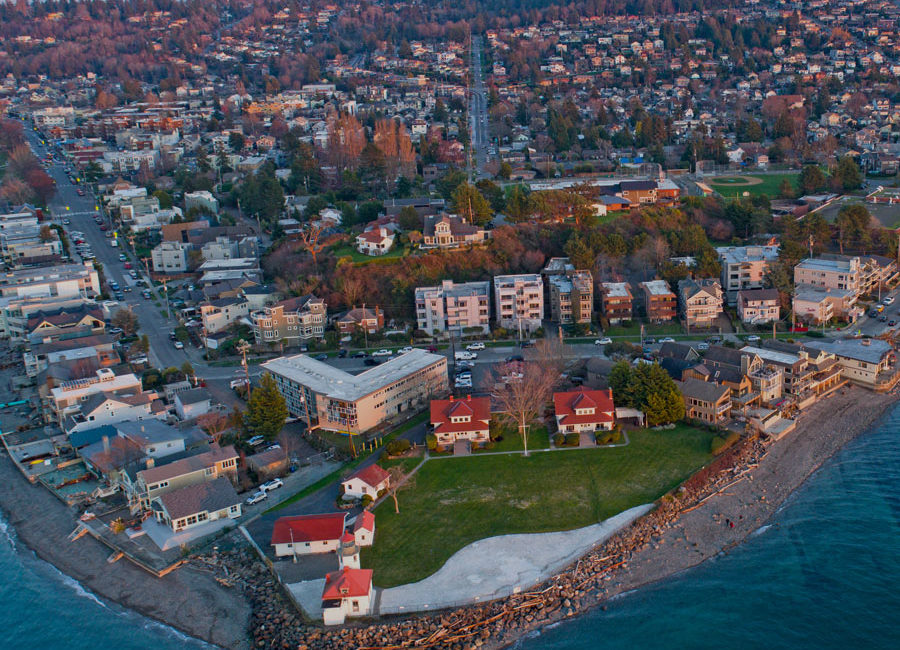Ballard – Vibrant Culture and
Activity North of Downtown
With its origins as a fishing and industrial district and modern-day attractions for dining, shopping, and more, Ballard has a lot to offer for residents and visitors alike. The neighborhood has many establishments that boast over 100 years of operation, bringing both history and a track record of quality that many Seattleites appreciate.
From browsing vintage vinyl at Ballard record shops Bop Street and Sonic Boom, to watching boats navigate the Hiram M. Chittenden locks between Puget Sound and Lake Union, Ballard residents have a lot to do, both indoors and out, whatever the season or the weather. Several live music venues, such as Tractor Tavern, are sprinkled along the district’s historic Ballard Avenue, hosting notable as well as up-and-coming bands many nights of the week. Ballard also has the city’s first year-round farmers market, which offers fresh produce and goods from local vendors every Sunday from 10 a.m. to 3 p.m., rain or shine.
2019 Data at a Glance
Average Home Price:
$742,000
Average Rent:
$2,102/month
Home price trend:
-7.3%
Walk Score (1-100):
87
Number of Parks:
18
Pros of Living in Ballard
Professionals, singles, families, and retirees all flock to Ballard for its trendy, vibrant, and versatile appeal. Some of the pros include the neighborhood’s safety, parks, and medical facilities, in addition to its vast array of spots to shop or get something tasty to eat or drink. The nightlife is slightly more mellow than other parts of the city such as Capitol Hill, but has a lot to offer in the way of late-night dining, live music, trivia, and even opportunities to play games with friends or strangers (Mox Boarding House).
In addition to the weekly farmers market, Ballard’s maritime heritage and early Scandinavian population lend themselves to some fantastic festivals each year. In May, the signing of Norway’s constitution is celebrated in Ballard with Syttende Mai, complete with the largest Synttende Mai parade in the world outside of Norway! Seafoodfest is a must every July, and Viking Days, the Fisherman’s Fall Festival and Yulefest at the Nordic History Museum are a few more that take place each year in this neighborhood.
Cons of Living in Ballard
Probably the most frustrating downside of living in Ballard (and/or visiting from other neighborhoods inside or outside the city) is the difficulty you’ll experience finding parking, particularly along the busy Market Street, Ballard Avenue, and 15th Avenue passages. However, the area’s walkability and public transportation help to mitigate this issue. It’s also located a bit further out from Downtown Seattle, and the constriction of Seattle’s waterways can cause delays and packed bus routes during rush hour, particularly if the Ballard Bridge is up for passing canal traffic.
History of Ballard, Seattle
Long before white settlers arrived in Seattle, a Duwamish group of people called the Xacho-absh or “Lake People” lived in the area we now know as Ballard. After the Denny party settled at Alki Point on November 13, 1851, a man named Ira Wilcox Utter was the first to file a homestead claim in the area, in 1852. From then on, much of the early population of the area was comprised of Scandinavian settlers who primarily fished the waters of Puget Sound for a living.
Ballard was incorporated as its own city in 1890, but its citizens later voted to annex to Seattle in late 1906 or early 1907 (the date varies with different sources). Ballardites weren’t all happy about the change, however, and a movement known as “Free Ballard” became a century-long rallying cry that extended beyond the residents’ desire to secede from Seattle, to focus on the preservation of the unique flavor of Ballard and stop overdevelopment.
In addition to fishing, Ballard was an industrial milling district in its early days, experiencing a massive growth after the 1889 Great Seattle Fire destroyed most of the waterfront industrial district. The Old Ballard cedar mills led the country in the manufacture of cedar shingles during the early to mid 1920s, giving the neighborhood its old nickname, “Shingletown USA.” The neighborhood produced 322 million wooden shingles in 1898 alone! Another tragic fire in 1958 on the docks of Shilshole took its toll, and the Shingletown moniker eventually lost its relevance amid new development and industry. Some of today’s establishments still memorialize the spirit of Old Ballard and the neighborhood’s roots in the shingle manufacturing industry, however, such as Shingletown Saloon.
Over the last decade or two, the changing demographics in Ballard have subdued the desire to secede from the city as a whole. But the Ballard Historical Society still exists to maintain the unique culture and community that Ballard has evoked for decades.
Home Prices in Ballard
The average home price in Ballard is around $742,000, which is down 7.3% since last year.
Perhaps due to industry and fishing making up the majority of the neighborhood’s early inhabitants, or the ongoing popularity and draw to Ballard’s unique culture and community, living space is precious in the area. Over half of the residences in the neighborhood are condominiums and apartments with less than 1,400 sq. ft., which draw more transient and temporary inhabitants. The average rent for a one-bedroom apartment is $2,102.
Population density in Ballard has spiked over the last 20 years, and the average construction date for residences in the neighborhood is 1999, which is much newer than the citywide average of 1948.
Many of the single-family residences in Ballard are single-story bungalows with two to four bedrooms. Harkening back to 1911 true Arts and Crafts architecture, these homes often have clean and simple lines, a large front porch with heavy posts, large eaves for shade, large windows, and simple trim. But homes of all styles and sizes can be found throughout Ballard as well, from dozens with newer, modern-style architecture, to others with the classic Craftsman-style design.
Walk Score & Transportation in Ballard
Ballard is the 12th most walkable neighborhood in the city, with a walkscore of 89 and a transit score of 54. It’s also very bikeable, with a bike score of 88.
The neighborhood has five major transit lines, with the most popular and busy being the RapidRide D-Line, which links Ballard to Downtown Seattle with stops for access to Crown Hill, Queen Anne, and Interbay and includes a Night Owl route. There’s also route 17 with access to Sunset Hill and Downtown, 18 with access to North Beach and Downtown, 29 with access to Downtown via Seattle Pacific University and Queen Anne, and route 44, which connects Ballard with Wallingford and the University of Washington Station (includes a Night Owl route).
In 2035, the Ballard to downtown extension of the Link light rail will add 7.1 miles of light rail service from downtown Seattle to Ballard, including nine new stations between the Chinatown-International District and Market Street.
There are nearly 20 parks in the neighborhood, with varying sizes and amenities, but the best known and most popular is Golden Gardens, with its sandy beach and firepits.
Unique Gems in Ballard
Ballard is extremely rich with options for food and drink, especially with its growing list of local breweries and microbreweries in addition to new and long-time favorites for foodies, such as Senor Moose Cafe, where you can get authentic, delicious Mexican fare. There’s also plenty to do, whether you’re touring the Hiram M. Chittenden locks or the Carl S. English Jr. Botanical Garden, having a go at the indoor climbing walls at Stone Gardens, or shopping at one of Ballard’s many boutiques and quirky retail stops along Ballard Avenue.
The Walrus and The Carpenter: A must for neighborhood residents as well as out-of-town visitors, this Old Ballard eatery has been a go-to favorite for about a decade, and for good reason. You can sample dozens of different varieties of oysters — fresh-shucked, icy cold, and served on the half-shell — plus other small bites and tastes from the establishment’s acclaimed cocktail menu.
Reuben’s Brews: One of the favorite new(ish) breweries in Ballard, this spot gets busy serving up delicious beers by the pint or in customizable flights, alongside free pretzels and other salty snacks. Guests can also buy bites from the weekly lineup of food trucks that have scheduled hours at the brewery, or even have pizza delivered from one of the area’s tasty pie joints. Reuben’s has a nice patio as well as their indoor space, with covered seating and hightop barrels for guests wanting to soak up some sunshine.
Mox Boarding House: Sure, you can buy a board game at Mox, but why not try it out first with some friends or even a couple of strangers? There’s an extensive library of card and board games to play in the establishment’s comfortable space, and you can nibble on tasty snacks, salads, sandwiches, and more from their restaurant menu. There’s also beer, wine, and root beer on tap, made locally by Diamond Knot Brewing Company.
Portal Virtual Reality Arcade & Lounge: Virtual reality (VR) gaming is newer to the arcade scene, and Portal offers it for single player or multiplayer rounds between guests or in-store players with others online. Guests ages 8 and up are welcome to play and try VR in Portal’s 10 padded booths for 90-, 60-, 30-, and 15-minute blocks (play by yourself or split your time with others). You can also enjoy snacks and drinks from the lounge and watch other players while you wait for your turn.
Tractor Tavern: For more than 25 years, Tractor Tavern has been a hotspot to sample new and favorite live music bands — every night of the week. There are plenty of beers and spirits to sip on while you enjoy tunes from local, national, and international artists.

